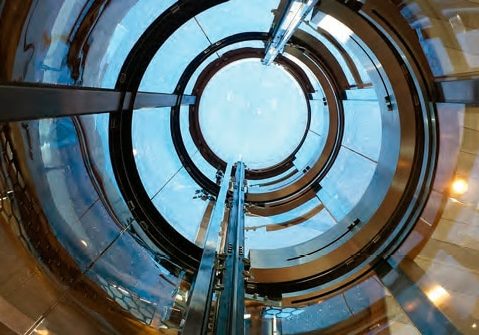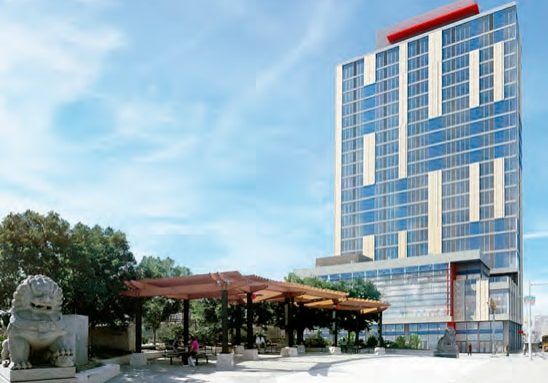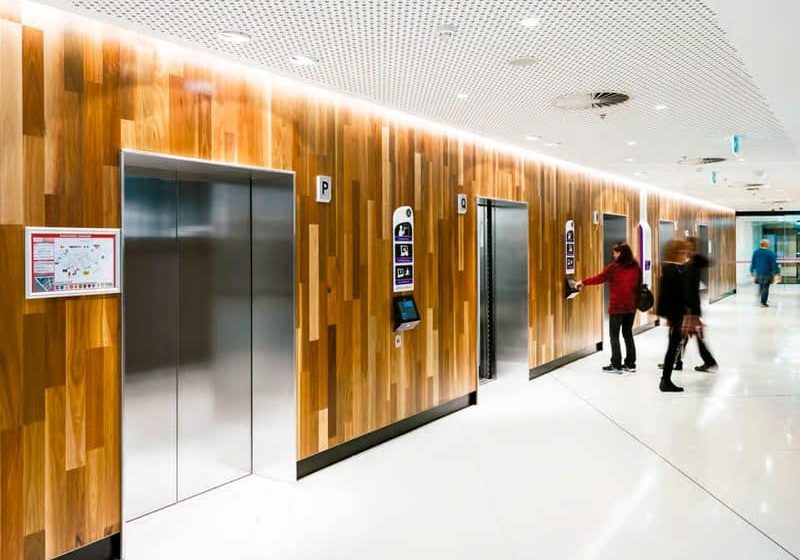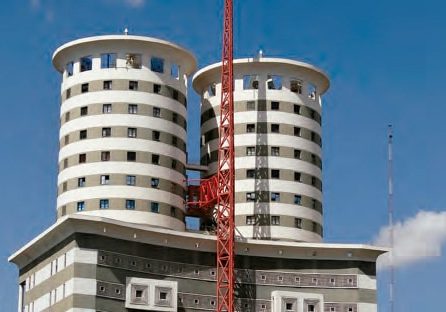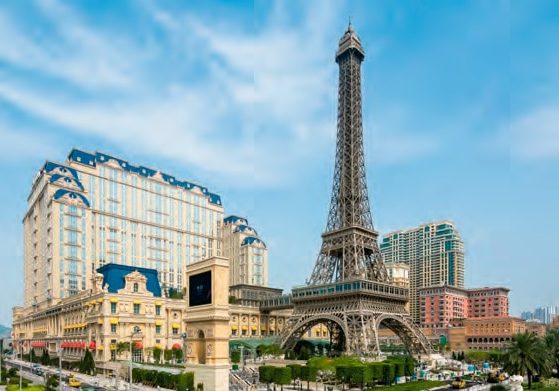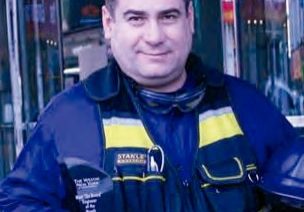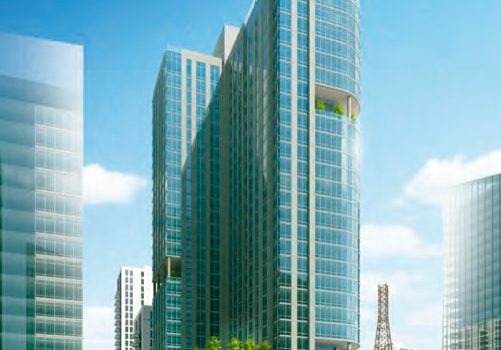European Lift Congress Heilbronn 2016
Jan 1, 2017
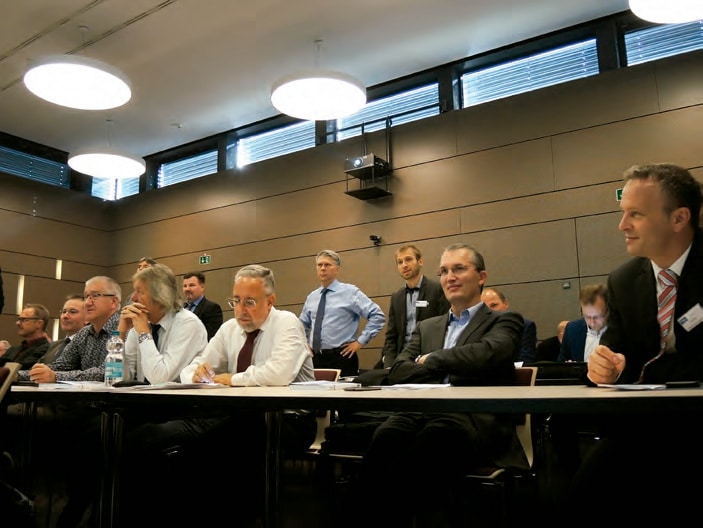
A urgent call for strategic planning and innovation in the European elevator industry
The Seventh European Lift Congress Heilbronn’s motto was “Lifts for the Future.” The event took place on October 11-12, 2016, at the Experimenta Science Center and Insel-Hotel in Heilbronn, Germany, with about 80 participants. Nearly 50% of them came from 18 different countries. KONE, Otis, Schindler and thyssenkrupp had good representation, followed by Notified Bodies (NBs), researchers and many others. The topic of the congress was well covered by 18 European speakers looking toward the elevator industry’s future.
In his opening words, the new chairman, Dr. Wolfram Vogel, a German lift consultant, highlighted the four chapters of the congress: standards and markets, urbanization and future (mega)cities, mobility and living quarters, and innovation and new methods. His message was reinforced by Dr. Georg Clauss of organizer Technical Academy Heilbronn when he stated, “A new chairman brings in new contents, creating a new community. The alternation of generations has started.”
International Rules and Regulations
Esfandiar Gharibaan has represented KONE in CEN/TC 10 for 14 years as its chairman. He said that many countries around the world are using the EN 81 family as a basis for their national standards. ISO has decided to adopt EN 81-20/-50 as ISO 8100-1/2, which is a big step forward in harmonization of national standards based on ISO standards. Gharibaan stated that the work is proceeding well and predicted that achieving that level of harmonization requires “much effort from all standardization experts and organizations.” Gharibaan also detailed:
“EN 81-20/-50 brings many improvements in safety for lifts. This also means many changes to the design of lifts. To allow adequate time for all stakeholders to implement those changes, CEN/TC 10 decided for a transition period of three years. In addition, there has been much publicity around EN 81-20/-50. The industry and other relevant parties were made aware of the changes, which helped them prepare in a timely manner. The standardization work is not completed yet. There are more than 20 revised supplementary standards to be aligned with EN 81-20/-50. Those standards will be published with common publication and withdrawal dates, reducing the burden for the stakeholders for implementation. I personally find working in standardization extremely satisfying, as many experts work together to improve the safety for lifts.”
Siegfried Melzer from TÜV SÜD in Germany reported about the experiences of NBs in the concretization of EN 81-20/-50. As the NBs were interpreting many text passages, there were more open questions than answers. Next, Hans Huber from Switzerland reported on his perception of Asian (mainly the Chinese) markets for European manufacturers. Additionally, Jorge Ligüerre, president of the European Lift Association (ELA), showed how ELA helps finding and paving ways to standardization for European elevator companies.
High-Tech Building Technologies in the Elevator Industry
Guillaume Bonatre from Otis France reported about pit ventilation based on EN 81-20. With the help of an external laboratory, Otis combined study there and in the field, under the supervision of an NB. Common understanding was upended, as realization that many more aspects directly influence airflow provided a clear interface toward heating, ventilation and air-conditioning techniques. Accommodating the techniques demands an early involvement of elevator experts into the planning process of the whole building, including building information modeling overlooking all trades involved.
Following a presentation by Rudi Beha from Leitner Group of Italy on urban inclined lifts, Dr. Wolfgang Sundermann from ILEK University of Stuttgart, Germany, dealt with the history and future of high-rise buildings. With an architectural view, he showed how elevator groups can use less-valuable space. Philippe Choleau from thyssenkrupp of Germany then presented on the MULTI product the company is designing.
Accessibility
Lift expert and consultant Stefan Kretzschmar of Germany presented facts and figures in the market of barrier-free living with low-tech elevators according to the European Union (EU) Machinery Directive. Monika Klenovec of ANEC, which calls itself “the European consumer voice in standardization,” continued with the European way of a barrier-free life with lifts. Her presentation covered the political background, detailed technical solutions and news that the new ISO 21542: Building Construction: Accessibility and Usability of the Built Environment will be available in 2018.
Dematerialization by Industry 4.0
Volker Zapf from Schindler of Switzerland encouraged attendees to begin their simulations in elevator technology as soon as possible. He also introduced simulation methods, tools and models, showed example simulations of vibrations of ropes and belts, and stated the importance of asking architects to provide needed data of high-rise vibration frequencies.
Jens Mammitzsch from the German Chemnitz University of Technology presented on new ropes, and Huber returned to speak on an innovated test method for ropes and predictive maintenance in the future. Heiko Essinger from ELGO of Germany talked about safety systems based on magnetic tapes. Karl Kriener from Wittur of Germany presented his electromechanical brake. Dr. Richard Peters from Peters Research of the U.K. presented on traffic simulations and how they compare with what happens in the real world.
Other Programs
The social program offered an attractive mixture of personal encounters, culture and contents. The evening before the congress, the speakers, chairman and organizer, as well as several reporters, came together in the Insel-Hotel for an exchange of opinions. The liveliest discussions happened in small groups during the coffee breaks. Also, the conference dinner in the Heilbronn Town Hall cellars was an invitation to meet and greet. All participants lingered with the good food, excellent wine from the hills around Heilbronn and a slideshow. Before the evening entertainment, guided tours through the science center and historic town of Heilbronn were offered.
The former chairman of the event, Dr. Gerhard Schiffner from thyssenkrupp, enjoyed the attractive program put together by Vogel and his program committee. Sabine Aschmutat from the Central Authority of the Federal states for Safety summed up the main contents of the 2016 conference well: “Getting to know the latest technology, as well as looking into the future for what comes up next from the EU and the rest of the world.”
The next European Lift Congress Heilbronn will take place in October 2018. Details will be forthcoming and reported in ELEVATOR WORLD.
Voices from the Congress
by John Gale
Wolfram Vogel
Wolfram Vogel (WV) is now the convener of the European Lift Congress Heilbronn. Your reporter (JG) felt this was the perfect time to introduce him to ELEVATOR WORLD readers.
JG: What started you on your academic lift-industry career? Did anyone inspire you?
WV: I started my professional career with the studies of mechanical engineering at University of Karlsruhe, then the University of Stuttgart (both in Germany) as an assistant of the legendary developer and constructor in lift business and rope research, Dr.-Ing. Klaus Feyrer. He infected me in a positive way to solve the dynamical problems of lifts and their components, in particular traction media. He became my father figure, and we still have lively and fruitful discussions today, particularly in regards to lift topics.
JG: What are your main activities and responsibilities in the lift sector?
WV: I spent a long time at university and in the industry involved in rope R&D, sales, material handling and logistics. I’m now a lecturer at the University of Chemnitz/Saxonia in Germany as a professor in the field of lifts, person transport and lifting technics. I’m working for the national industry-based association VFA-Interlift e.V. at its academy as a lecturer. This year, I had the pleasure to organize the Seventh European Lift Congress Heilbronn, including its form and content. I hope to encourage and bring into account an interdisciplinary view of technology as applied to the lift industry in future congresses. I’m also a publicly certified expert for elevator, rope and lifting technologies by IHK (Industrie- und Handelskammer) in the Stuttgart, Germany, region, working for courts, insurance agencies and private persons.
JG: Do you see a chance for expanding and strengthening European Lift Congress Heilbronn’s links with other elevator congresses?
WV: There is an intersection of topics between the lift congresses around the world, so cooperation should certainly be considered. However, I also see a lot of standalone characteristics for the different congresses, along with a proper chance for fruitful cooperation without rivalry. The responsible persons of the organizations and their committees will have to discuss this in the future and work out a way that not only develops the national interest, but also provides a valuable event for the industry as a whole.
Andreas Honnige
Andreas Honnige (AH) is managing director of the new enterprise LiFTCORE GmbH and has been active in the lift industry for many years. He is also a board member of VFA-Interlift and feels that training and education of all staff in the lift industry is his destiny.
JG: How did you get started in the lift industry?
AH: In 1987, I started in the R&D department of a large German lift company. I worked there for five years, learning much about lift technology. My first management position was in 1996, followed by various management responsibilities in different organizations and companies.
JG: What are your main activities and responsibilities at LiFTCORE?
AH: I am focused on managing the company, developing growth strategies, and creating environments for steady and sustainable growth. This activity is related to relevant innovative technologies and new business strategies to ensure products are released to the lift market at the right time. I am also CEO for LiFTCORE’s overseas expansions, such as U-Tek Elevator Inc. in New York, which is an exciting responsibility.
JG: How do you think delegates benefit by attending elevator congresses?
AH: The selection of topics provides a perfect overview about the technology and the market, and gives ideas about potential future business models. Attending a congress is a must for leading decision makers in the lift industry. I recommend to all managers to take the time for these two days every two years and come to Heilbronn with their staff.
Dr. Ferhat Çelik
Ferhat Çelik (FC) has extensive experience in lift hydraulics and is the technical director of Blain Hydraulics, based in Heilbronn.
JG: Could you tell me about the early years of your career?
FC: I grew up in Istanbul, where I finished my high school and bachelor’s degree in Mechanical Engineering there. My first job experience after graduating from the university was in the hydraulic sector with a small-scale, family-run company producing hydraulic presses. There, the working environment was extremely warm, motivating and trustworthy. Years later, after meeting Mr. Blain and knowing about Blain Hydraulics, I was reminded of my first engineering practice, which induced my decision to be a part of Blain. Now, I see that it was the right instinct to follow.
JG: What is your role at Blain?
FC: Apart from dealing intensely in R&D projects, one of my main responsibilities is to improve the attractiveness of the hydraulic-elevator sector and open new markets. To fulfill these objectives, I attend committee meetings at the European Lift Association and AYSAD (Turkish Lift Association), present technical papers and publish educational articles in magazines. Through these activities, we stay attuned for upcoming changes and keep close contact with the industry.
JG: What future do you see for new technology and materials in the world of hydraulic lifts?
FC: Easy-to-handle equipment and light, high-strength materials (namely, composites such as carbon fiber) are the future in the hydraulic world. This is because competent installers and service personnel are, unfortunately, not easy to find, and this situation does not seem to be getting better. Thus, hydraulic components (in our case, control valves) should be simple and easy to handle. On the other hand, motives for selecting hydraulic lifts are simplicity, reliability and cost effectiveness at the cost of having larger motors, while no counterweight is used.
Blain has been working on developing a carbon-fiber cylinder for the elevator industry to introduce a new diversion to the sector. The first prototype was exhibited at Liftex 2016 (EW, September 2016). R&D projects have been continuing to improve properties and lower the costs of production. Utilizing the carbon-fiber cylinder, light cabin and sling, together with our EV4-vvvf valve could increase energy savings by 70%, which brings energy efficiency to or above that of a traction machine-room-less (MRL) unit.
JG: What are your thoughts on the current trend away from hydraulic elevator systems?
FC: In the last two decades, a strong perception has been injected in minds that traction MRL lifts are the only answer for a “green” solution. We have been battling against such anti-hydraulic rhetoric from the beginning to prove just the opposite. This includes continuous effort and investments in new green technologies and informing the industry about the facts.
JG: How do you think delegates benefit by attending elevator congresses?
FC: These are useful platforms to inform the industry about the developments of new standards and technologies. I strongly believe that the delegates also broaden their minds about future trends and gather valuable information to revise their future business strategies. Such platforms also bring all sector players together in a competitive environment and ignite inventive thinking and innovations. Among them, this event has a special mission to introduce likely future trends and related developments to delegates. It is neither too academic to distress the audience, nor so commercial as to cause eyerolling. Though the city does not offer much for the delegates, I find the input very valuable.
Hans Huber
Hans M. Huber (HH) has extensive experience in rope manufacturing and is the owner of both H. Huber Wire Rope Technology & Support GmbH. and Hong Kong Rope Safety Laboratory. Huber has vast experience in setting up new production facilities and marketing rope products in many markets, including China.
JG: What started you in your lift-industry career, and who inspired you?
HH: After receiving a degree in Civil Engineering in Switzerland, I worked for a major Swiss company planning and building highway and railroad tunnels. I wanted to gain knowledge of industrial production processes and believed that two to three years working in a factory would provide me with some insight into this sector. I was employed as a plant engineer for a Swiss wire-rope factory, where I met Eduard Schmocker, a well-known figure in the Swiss wire-rope industry. His vast knowledge of the industry inspired me to extend my job experience to more than 32 years. I still have a fascination with rope technology and all facets of rope design, manufacture and performance.
JG: What are your main activities and responsibilities?
HH: In the last 15 years, I built and managed elevator-rope production facilities in the U.S. and China. I was exposed to various rope products for different applications. Currently, I’m a consultant, supporting and assisting two large Asian entities in planning and setting up rope construction, production processes and rope factories. I trust and hope my professional services to the industry will help reduce costs for high-quality elevator ropes and improve elevator safety systems. I consider rope and elevator safety as one of my highest priorities in the lift sector.
JG: What future do you see for rope manufacturers? Will new technologies and materials play an important part in that future?
HH: Innovative rope makers will have a good future. It is important for the next generation of ropes to deal with a multitude of future suspension requirements for elevators. Along with suspension challenges for new lift systems, many existing elevator installations are old and require renovation work. So, new innovations and improved products will be required to fill these needs in the future. These could involve more ropes, smaller rope diameters, ropes with less weight, more durable or maintenance-free ropes, ropes constructed of new materials, and steel/fiber-mixed ropes.
Looking at linear-motor-driven elevators, ropemakers may have to consider entering a completely new field, but that will be some years away. For now, rope manufacturers will probably have to collaborate more with elevator companies to ensure a good future.
John Gale is a third-generation veteran of the lift industry. He has worked as a photographer and contributor for ELEVATOR WORLD since 1986, primarily covering meetings, congresses and trade shows. In 1999, he co-designed Moving People from Street to Platform, a book on the vertical-transportation equipment in the London Underground.
Get more of Elevator World. Sign up for our free e-newsletter.


